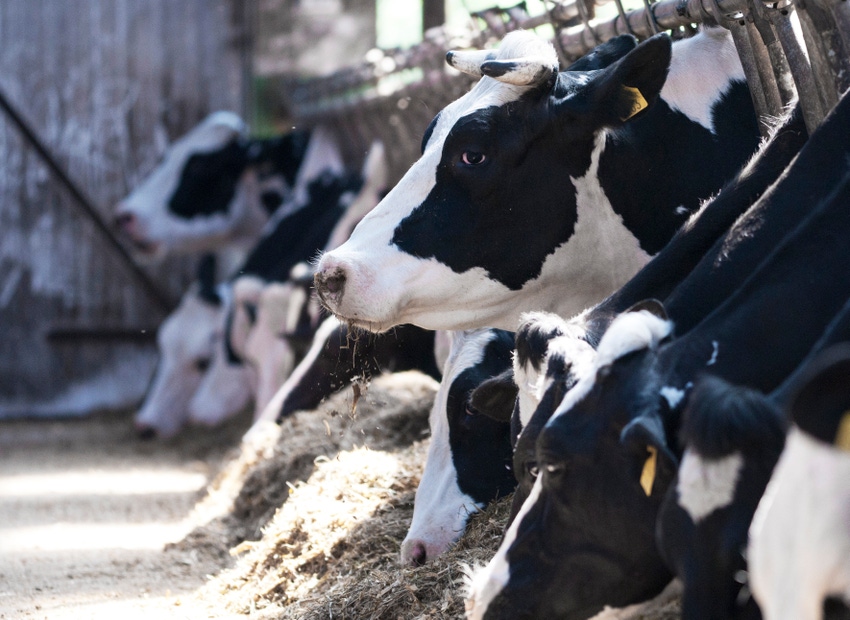Over 50% of dairy producers enrolled in 2021 have not re-enrolled for 2022.

The signup period for 2022 coverage under USDA’s Dairy Margin Coverage program has been extended by five weeks to maximize producer participation in this important program. DMC offers effective margin protection for small and mid-sized farms and affordable catastrophic coverage for large farms.
“Over the past two years, American dairy farmers have faced unprecedented uncertainty, from the ongoing pandemic to protracted natural disasters. As producers continue to manage these interconnected challenges, FSA has tools at the ready to provide critical support,” says Farm Service Agency Administrator Zach Ducheneaux. “We are encouraging dairy operations to take advantage of the extended deadline and join the 8,969 operations that have already enrolled for 2022 coverage.”
Ducheneaux says, at 15 cents per hundredweight at the $9.50 level of coverage, “DMC is a very cost-effective risk management tool for dairy producers.”
Enrollment for 2022 DMC is currently at 48% of the 2021 program year enrollment. Producers who enrolled in DMC for 2021 received margin payments each month, January through November for a total of $1.2 billion, with an average payment of $60,275 per operation.
The National Milk Producers Federation is encouraging every dairy farmer to sign up for maximum Tier 1 DMC coverage in 2022 by contacting their local Farm Service Agency office by March 25. NMPF urged all producers to sign up for DMC protection, part of a suite of NMPF-supported, federally backed risk-management that also includes the dairy insurance programs: Risk Protection and Livestock Gross Margin Insurance.
“Dairy farmers thank USDA and Secretary Vilsack for extending signup for this year’s Dairy Margin Coverage Program in order to maximize producer signup for this important program,” says NMPF President and CEO Jim Mulhern. “DMC offers cost-effective margin protection for small and medium-sized producers and inexpensive catastrophic coverage for larger dairies. It provides critical protection against unforeseen market disruptions – and if the past two years have shown anything, it’s that unforeseen market disruptions can happen.”
The DMC program, created by the 2018 Farm Bill, offers reasonably priced protection to dairy producers when the difference between the all-milk price and the average feed cost (the margin) falls below a certain dollar amount selected by the producer. Supplemental DMC will provide $580 million to better help small- and mid-sized dairy operations that have increased production over the years but were not able to enroll the additional production. Now, they will be able to retroactively receive payments for that supplemental production. Additionally, FSA updated how feed costs are calculated, which will make the program more reflective of dairy producers’ actual expenses.
Supplemental DMC enrollment
Eligible dairy operations with less than 5 million pounds of established production history may enroll supplemental pounds based upon a formula using 2019 actual milk marketings, which will result in additional payments. Producers will be required to provide FSA with their 2019 Milk Marketing Statement.
Supplemental DMC coverage is applicable to calendar years 2021, 2022 and 2023. Participating dairy operations with supplemental production may receive retroactive supplemental payments for 2021 in addition to payments based on their established production history.
Supplemental DMC will require a revision to a producer’s 2021 DMC contract and must occur before enrollment in DMC for the 2022 program year. Producers will be able to revise 2021 DMC contracts, apply for 2022 DMC, and enroll in other FSA programs by contacting their local USDA Service Center.
DMC 2022 enrollment
After making any revisions to 2021 DMC contracts for Supplemental DMC, producers can sign up for 2022 coverage. DMC provides eligible dairy producers with risk management coverage that pays producers when the difference between the price of milk and the cost of feed falls below a certain level. In 2021, based on data to date, DMC payments have triggered for January through November for more than $1 billion.
For DMC enrollment, producers must certify with FSA that the operation is commercially marketing milk, sign all required forms and pay the $100 administrative fee. The fee is waived for farmers who are considered limited resource, beginning, socially disadvantaged, or a military veteran. To determine the appropriate level of DMC coverage for a specific dairy operation, producers can use the online dairy decision tool.
Updates to feed costs
USDA has also changed the DMC feed cost formula via final rule published on Dec. 13, 2021, to better reflect the actual cost dairy farmers pay for high-quality alfalfa hay. FSA now calculates payments using 100% premium alfalfa hay rather than 50%. In December 2021, following publication of the new feed cost policy, $102 million was paid to producers as a result of the revised high quality alfalfa feed cost formula.
The amended feed cost formula will make DMC payments more reflective of actual dairy producer expenses.
About the Author(s)
You May Also Like




.png?width=300&auto=webp&quality=80&disable=upscale)
